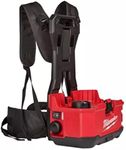Buying Guide for the Best Backpack Sprayers
Choosing the right backpack sprayer can make a significant difference in the efficiency and ease of your gardening or agricultural tasks. A backpack sprayer is a versatile tool used for applying fertilizers, herbicides, pesticides, and other liquid solutions. To find the best fit for your needs, it's important to understand the key specifications and how they impact performance and usability. Here are the main factors to consider when selecting a backpack sprayer.Tank CapacityTank capacity refers to the amount of liquid the sprayer can hold. This is important because it determines how long you can spray without needing to refill. Tank capacities typically range from 2 to 6 gallons. Smaller tanks (2-3 gallons) are lighter and easier to carry, making them suitable for small gardens or short tasks. Medium tanks (4-5 gallons) offer a balance between capacity and weight, ideal for medium-sized gardens or moderate tasks. Larger tanks (6 gallons) are best for extensive areas or prolonged use but can be heavy when full. Choose a tank size based on the area you need to cover and your ability to carry the weight comfortably.
Pump TypeThe pump type determines how the sprayer builds pressure to spray the liquid. There are two main types: piston and diaphragm pumps. Piston pumps are generally more efficient and can generate higher pressure, making them suitable for spraying fine mist and reaching higher areas. However, they are more prone to wear and tear when used with abrasive chemicals. Diaphragm pumps are more durable and can handle a wider range of chemicals, including those that are abrasive or contain solids. They are ideal for heavy-duty use and longer-lasting performance. Choose a pump type based on the type of chemicals you will be using and the durability you need.
Pressure RangeThe pressure range of a backpack sprayer affects the spray pattern and reach. Higher pressure allows for finer mist and longer reach, which is useful for tall plants or trees. Lower pressure is suitable for close-range spraying and larger droplets, which are less likely to drift. Pressure ranges typically vary from 15 to 90 psi (pounds per square inch). For general gardening tasks, a pressure range of 15-30 psi is usually sufficient. For more specialized tasks, such as spraying tall trees or applying fine mist, look for sprayers with higher pressure capabilities. Consider the types of plants and the height you need to reach when choosing the pressure range.
Weight and ComfortThe weight of the backpack sprayer, especially when filled, can impact your comfort and ease of use. Look for sprayers with padded shoulder straps and back support to distribute the weight evenly and reduce strain. Some models also offer waist belts for additional support. The empty weight of the sprayer combined with the tank capacity will give you an idea of how heavy it will be when full. If you have a large area to cover or will be using the sprayer for extended periods, prioritize comfort features to avoid fatigue and discomfort.
Nozzle TypesNozzle types determine the spray pattern and droplet size. Common nozzle types include adjustable, fan, cone, and stream nozzles. Adjustable nozzles allow you to change the spray pattern from a fine mist to a solid stream, offering versatility for different tasks. Fan nozzles provide a wide, even spray, ideal for covering large areas quickly. Cone nozzles create a circular spray pattern, suitable for targeted applications. Stream nozzles produce a concentrated jet, useful for reaching specific spots or high areas. Consider the types of applications you will be performing and choose a sprayer with the appropriate nozzle options.
Material and DurabilityThe material of the backpack sprayer affects its durability and resistance to chemicals. Common materials include plastic, stainless steel, and polyethylene. Plastic sprayers are lightweight and affordable but may not be as durable as other materials. Stainless steel sprayers are highly durable and resistant to corrosion, making them suitable for heavy-duty use and harsh chemicals. Polyethylene sprayers offer a good balance of durability and chemical resistance, suitable for most gardening tasks. Choose a material based on the type of chemicals you will be using and the level of durability you need.
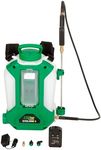
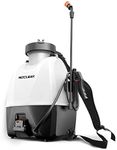
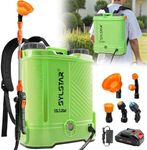



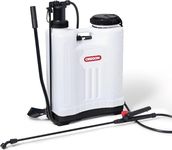
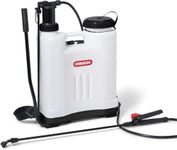


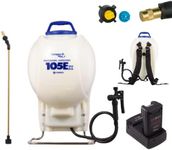
![HOZELOCK - Pressure Sprayer Standard 5L : Versatile, Easy-to-use Sprayer, Ideal for Water-based Solutions (Insecticides, Fungicides, Weedkillers, Fertilisers), 20cm Lance [4230 0000]](https://images-proxy.bestreviews.guide/npuf7yl0LyUa88nvTyB3kMfDoWA=/0x150/https://m.media-amazon.com/images/I/31dC7LHjY2L._AC_CX679_.jpg)
